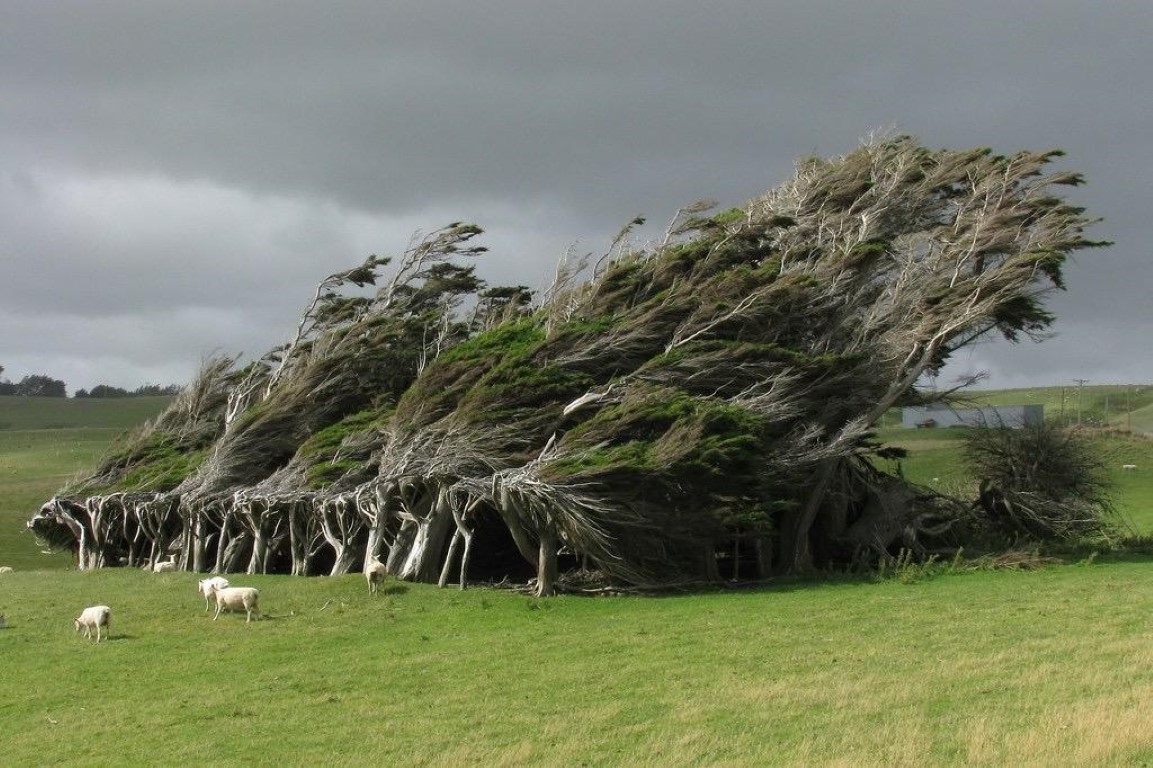One of the most calming sounds we hear is the wind rustling through the forest.
But there is a strange dynamic about the relationship between the wind and trees. So while storms and strong winds destroy trees, there are also ways that the wind and trees work together to benefit the trees.
We have for long known that good strong trees do not grow in places of ease. More than many other things, it needs strong winds. The stronger the wind, the stronger the trees turn out.
When scientists created the Earth system science research facility in Arizona to study from close a very large economic system, they found out a lot about the importance of wind as trees grow.
Bereft of the benefits of sustained strong winds, trees grow weaker and die out much more quickly. Sustained windy conditions help the trees to sway from side to side as they grow. This leads to a unique reaction in the trees. In order to counter the strong winds, which could lead to the leaning branches and even the trunk breaking or splintering, trees react.
This reaction produces a unique type of wood as a response to the force exerted by the wind. The sustained strong wind is a signal to the tree to create stronger wood over the period of its growth, helping it better withstand the force of the wind.
The Science Behind The Dynamics Between The Wind And Strong Trees
In the natural environment, we commonly come across trees that have an incredible degree of bending. Among other reasons like landslides, it could be the consequences of strong and sustained winds that continually blow in from one particular direction, causing the tree to grow at an awkward angle. This is commonly seen in coastal trees.
But some trees also react to this continual force acting against them. In order to counter outside forces, like strong winds, which could lead to the trees or branches breaking or splintering, the trees react. The response is the production of a unique type of wood that serves to strengthen the trees. Such wood is known as reaction wood, a part of the tree’s efforts to upright and straighten its trunks and branches from the alteration of its vertical alignment.
How Winds Contribute To The Growth Of Trees
The strongest trees are generally found in places with strong winds. Oak trees, for instance, are normally found in areas with strong winds. Scientists realized much later that plants yield auxins, which are a group of artificially synthesized and naturally occurring plant hormones. That triggers the growth of supporting cells in windy areas and causes the trees to be stronger.
Strong and sustained wind is vital for trees because it leads to the root system growing deeper. The trees also grow stronger and have more rings which helps support the trees as they grow tall in windy regions.
While there are multiple factors that contribute to the growth of trees, there is also evidence that strong wind can contribute to the growth by providing trees with the distribution of water and nutrients through the trees and also in aeration.
Does Wind Contribute To The Growth Of Trees?
Trees respond to multiple stimuli simultaneously. The quality and the quantity of the wood that the trees produce are linked to how much wind blows through the trees. Trees adapt and thrive when subjected to strong wind loads. Windswept trees increase the stem taper and branch length, making them more developmentally vigorous.
As more stimuli get exerted on the trees, it senses the speed the trees’ buttress roots provide the resistance needed for external forces such as water and wind. It is for this reason that experts recommend that trees should not be staked for long. They need to move with the wind so that they can grow stronger.
So the next time you experience a strong wind, just enjoy it and consider the good that it does to the ecosystem.
Source List:
- https://www.canr.msu.edu/news/wind_is_essential_to_natural_processes
- https://ceventura.ucanr.edu/Gardening/Coastal/Landscape_578/Bending/

